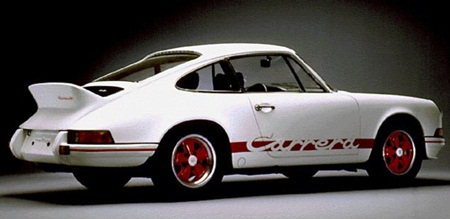This is the nine hundred and eleventh issue of the Pattaya Mail, and it was too good an opportunity to pass up, so here are some snippets about the Porsche 911.
I make no secret of the fact that Porsche is my favorite make, though many of the new Porsche’s are not my favorite cars. Let’s get them out of the way first. The Panamera is a fat pig. It reminds me of an overweight, bloated buffalo. Why is there such a car as the Cayenne? And the Cayenne Turbo is even more nonsensical. Goes like a 911 on steroids with a carrying capacity of several adult humans, three children and two weeks of grocery shopping – but why? Are there really people who want supercar performance in a supermarket shopping trolley? Wouldn’t they just rather have a Porsche sports car and a Fortuner for the shops?
 Early 911
Early 911
But of course, the mystique of Porsche goes back to the immediate post-war era, the days when it was the mechanics who deliberated as to whether a potential customer even deserved a car. If the person was unable to change the unsynchronized gearbox without grating the gears – he did not get one!
In 1950, Professor Porsche turned 75 and a huge meeting of Porsche owners met in front of Castle Solitude near Stuttgart to honor him. He responded by walking through the ranks of cars and shook hands with all the drivers. About 12 months later, he suffered a stroke and died on January 30, 1952. At that point Ferry Porsche took over the responsibility for design.
Thinking outside the box was the norm at the Porsche works, and when they ran their rally cars on the autobahn (governed by the US Military Police in 1951 with a 50 mph speed limit) they made themselves special plates with “Test Car” on it which exempted it from the blanket ban. However, the “test cars” were actually competing in a rally!
The 911 has carved itself a place in motoring history, being a car that conventional engineering design claimed was “wrong”. With the world’s motor cars being at that time almost universally front engined and rear drive, how could a sports car with the engine in the rear hanging out behind the rear wheels and the gearbox possibly work?
The previous model, the 356, broke enough design rules – the new model would have to work, and in the tradition of excellence pioneered by old Professor Ferdinand Porsche. It was also hard to imagine how any new model would be more popular than the 356, which had sold 76,303 cars by the time it was phased out in 1965.
After many designs were rejected, the 911 gradually began to take shape, with a flat six with a triple Solex carburettor and a single overhead cam on each bank of three cylinders. A forged steel crankshaft and dry sumped oil circulation was settled on. A true racing specification. However, before the new six cylinder car reached production, there was a problem. Code named the Porsche 901, it was shown for the first time at the Frankfurt show in 1963 and it was then that Porsche found that Peugeot had the rights to all three number combinations with a zero in the middle (remember the 203?). The new Porsche was then renamed the 911. But as all those who have had older 911’s will tell you, the engine number was 901 XXXXXX, with the number 901 cast into the engine block.
 1973 RS Carrera
1973 RS Carrera
Right from the outset, the new 911 proved itself to be a competitive car. In January 1965, in its first international competition showing, the 911 won the 2 liter class in the Monte Carlo Rally.
As the years went on, the 911 engine progressively grew in capacity to 2.2 liters, then 2.4, 2.7 and then 3 liters, and this was all done by enlarging the bore, the stroke remained the same at 70.4 mm.
By 1973, the road going RS Carrera was delivering 230 bhp and the performance figures were zero to 100 km/h in just over five seconds. That supercar performance was almost 40 years ago! However, with all the development of the 911 series, Professor Porsche’s maxim of “only replace something good with something better” was rigidly adhered to.
The name ‘Porsche’ is synonymous with engineering excellence and has attracted millions of aficionados over the years. I had one friend in Australia who was a salesman in the Porsche dealership. He maintained, “I don’t have to sell Porsches, people come in to buy them.”
And of course, no article about Porsches can be written without including the wonderful joke about the lady in the Porsche showroom who felt the burning desire to break wind. Opening the passenger door she sat in and let nature rip, to suddenly find a salesman was sitting in the driving seat. Trying to get over this embarrassing situation she stammered, “Just how much is this Porsche 911?” He replied, “Madam, if you farted just sitting in a 911, you are going to sh*t yourself when you hear the price!”




